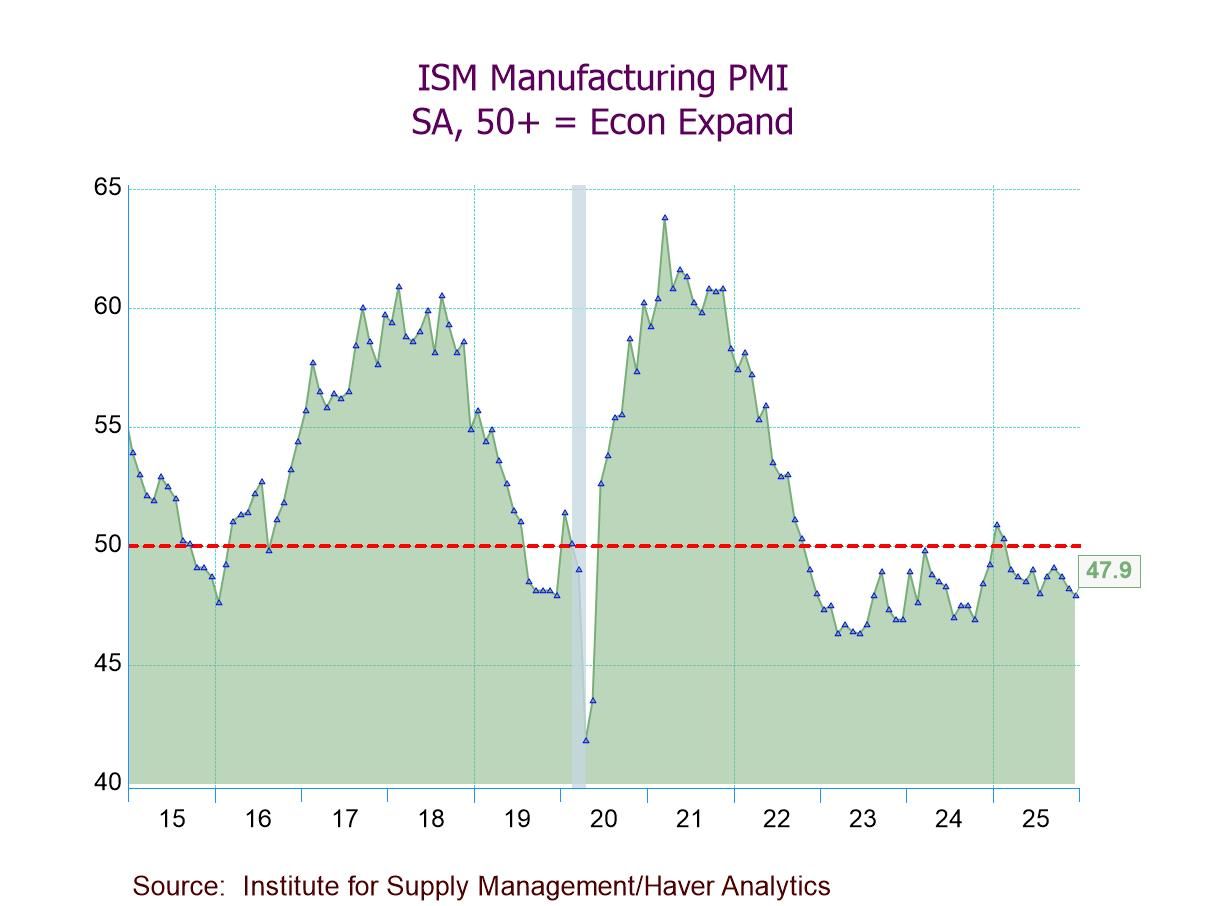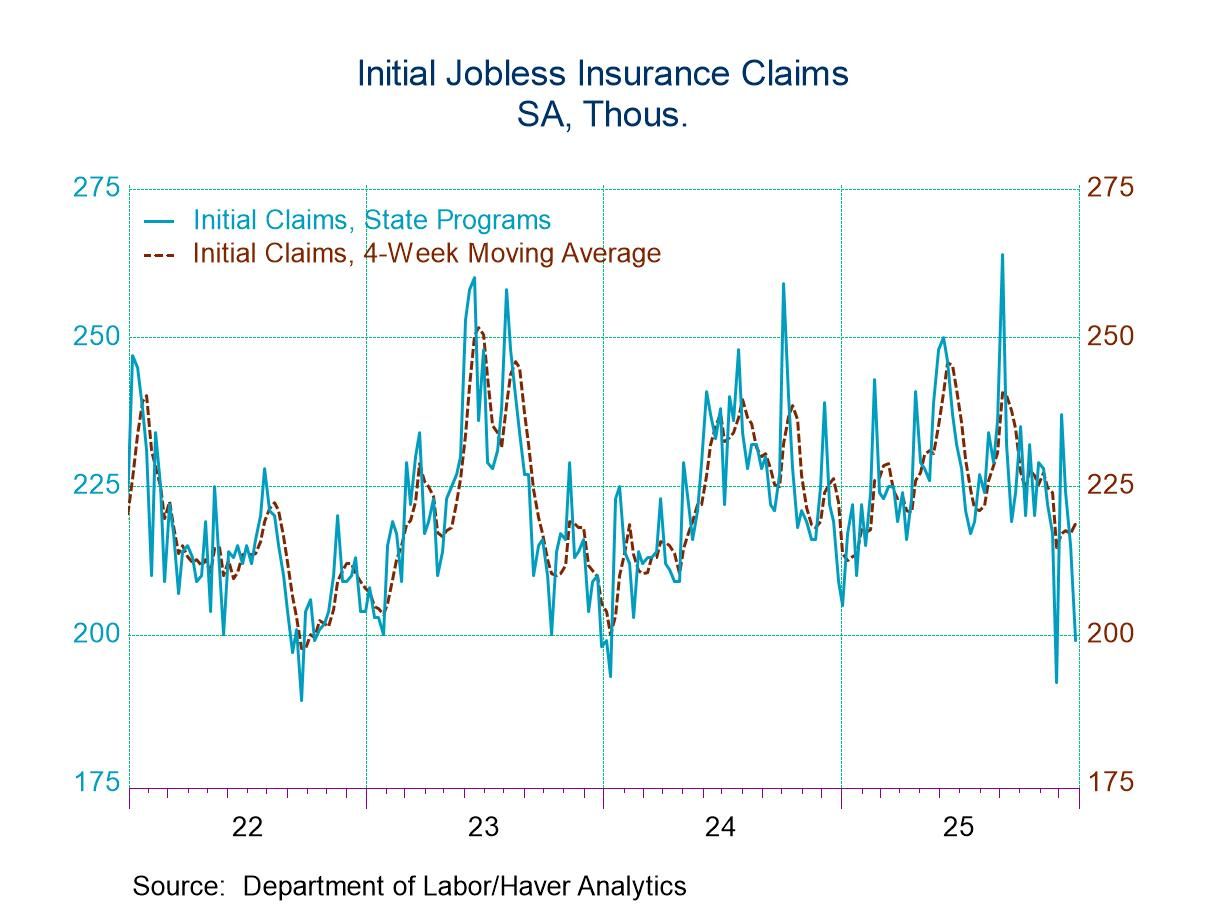 Global| Sep 19 2024
Global| Sep 19 2024Charts of the Week: Communication Challenges
by:Andrew Cates
|in:Economy in Brief
Summary
The financial market response to this week’s decision by the Fed to lower its policy rate by 50 basis points suggests that investors are uncertain about what that decision might mean for the economic outlook. Longer-term US bond yields, for example, climbed a little (chart 1) while stock markets ended lower on the day though have since re-traced those losses. This uncertainty arguably underscores the great difficulty in calibrating monetary policy and in communicating subsequent intentions at present. As we discuss below, investors remain highly sensitive to incoming data, partly because monetary policy calibration has been equally data-dependent. And the fact that both growth and inflation data have been consistently undershooting expectations has amplified concerns that US (and global) monetary policy has remained too tight for too long (see charts 2 and 3). Still, there are currently very few macroeconomic indicators signalling a high likelihood of an imminent US recession. Equally—and more concerning—latest wage data suggest that labour markets could still be tight (charts 4 and 5). Beyond these cyclical challenges, a debate about where growth and inflation will ultimately stabilize has also been active, with significant uncertainty about what might be considered a “normal” level for nominal and real interest rates. Factors such as ageing demographics, climate change and the energy transition, together with ongoing geopolitical uncertainty are shaping that debate. But how trend productivity growth now evolves will also be key to this and crucial to monitor in the period ahead as well (chart 6).
The US yield curve This week’s decision to lower their benchmark policy rate by 50bps did not elicit the reaction in the US bond markets that Fed officials may have anticipated. Longer-term bond yields, for example, shifted higher following the decision, suggesting that market participants are now pricing in higher interest rates from the Fed in the years ahead compared with prior expectations (see chart 1). There are many factors that could explain this, including the Fed’s communication through its so-called dot plot, outlining its future interest rate intentions. Additionally, the market may have reasoned that by cutting rates aggressively now this will lessen the need for a prolonged period of loose monetary policy over the medium term.
Chart 1: The US Treasury Market Yield Curve before and after the Fed’s interest rate decision

Global growth and inflation surprises It’s noteworthy, nevertheless, that US yield curve shifts, while rooted in investors’ expectations for monetary policy, have been heavily driven too by incoming data. This is evidenced in chart 2 below showing that 10-year US Treasury yields have tended to climb in recent years when global growth and inflation outcomes have been stronger than expected. Equally, yields have tended to decline when incoming data have elicited negative surprises. The increasing data-dependency of monetary policy calibration in recent years is a key factor behind these patterns. But it clearly implies that a further drop in bond yields, which most US forecasters anticipate over the coming months, could require a further slew of disappointing growth data and/or undershooting inflation outcomes as well.
Chart 2: Global growth and inflation surprises versus US 10 year bond yields

Supply chain pressures and monetary policy Fundamental drivers of the global growth and inflation outlook certainly suggest a cautious take on the economic landscape in the immediate weeks ahead. Policy-controlled interest rates are still relatively high in real terms and many forecasters still believe that monetary policy more generally is restrictive. The supply chain disruption that did so much to magnify price pressures over the past few years also suggest few reasons for concern, at present, about inflation in the traded goods sector. That’s reflected in the latest data for August showing a near-neutral level for the New York Fed’s global supply chain pressure index in chart 3 below.
Chart 3: Global supply chain pressures versus real policy rates in advanced economies

Wage pressures However, drilling into some of the country-level data reveals a few reasons for concern. One of these relates to the UK and specifically to the labour market. Latest data from the Indeed hiring group, for example, suggest that UK wage pressures have remained strong in recent months and have even intensified a little in recent weeks. At 6.8% y/y in August, the pace of posted wage growth is also uncomfortably high relative to the Bank of England’s 2% inflation target. As chart 4 below additionally suggests wage pressures in the US and euro area have, at least according to this company-level data, been strengthening in recent months as well.
Chart 4: Posted wage growth in the US, euro area and UK from the Indeed hiring group

UK inflation That UK wage pressures appear to have remained elevated in recent months also chimes with this week’s news on the broader inflation front. While UK CPI inflation held steady at 2.2% y/y in August, the details revealed that services inflation – which tends to be more sensitive to labour cost pressures - jumped to 5.6% from 5.2% in July. With activity in the service sector of the UK economy also holding up fairly well according to recent business surveys this may concern those with a more hawkish disposition on the Bank of England’s rate setting committee. It’s certainly a key reason why UK economists are not expecting another rate cut from the BoE this week (to be edited).
Chart 5: UK Consumer Price Inflation: Goods and Services Breakdown

Investment in AI Moving away from these cyclical considerations, there is also an active debate at present about where nominal and real interest rates might settle. Putting that another, more technical, way, what ought now to constitute a nominal and real equilibrium interest rate? It’s not an easy question to answer in part because of recent and prospective supply side transformations of the world economy. These concern climate change, the energy transition, ageing demographics, de-globalisation, and new technologies. On the latter, Artificial Intelligence, for example, could help productivity growth rebound and relax the supply-side constraints that are part of the inflation story. In doing so it could indirectly lower real interest rates. Still, there is equally much debate about which countries stand to benefit from this. Looking at data for private investment in AI, for example, shows that while global investment in this technology has risen dramatically over the past 2-3 years, much of that has been concentrated in the US (see chart 6 below).
Chart 6: Private investment in Artificial Intelligence by the US, EU & UK, and China

Andrew Cates
AuthorMore in Author Profile »Andy Cates joined Haver Analytics as a Senior Economist in 2020. Andy has more than 25 years of experience forecasting the global economic outlook and in assessing the implications for policy settings and financial markets. He has held various senior positions in London in a number of Investment Banks including as Head of Developed Markets Economics at Nomura and as Chief Eurozone Economist at RBS. These followed a spell of 21 years as Senior International Economist at UBS, 5 of which were spent in Singapore. Prior to his time in financial services Andy was a UK economist at HM Treasury in London holding positions in the domestic forecasting and macroeconomic modelling units. He has a BA in Economics from the University of York and an MSc in Economics and Econometrics from the University of Southampton.






